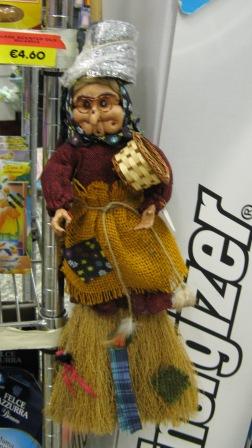
In Venice she is also sometimes referred to as the marantega barola (ma-RAHN-teh-ga ba-RO-la), or wizened old crone. In ordinary life you might hear a particularly obnoxious busybody referred to as a marantega, regardless of her age, though the implication of decrepitude would add an extra fillip of insult to a younger person.
But despite the unpleasant connotations of hagdom, the Befana is all smiles, a benevolent old biddy who flies by night and comes down the chimney (or through the keyhole) to fill with candy and little toys the stockings the children have left attached to the hearth mantelpiece or some other convenient place. (Bad children, at least in theory, will get pieces of coal, but bad children seem to have become only a holiday myth.)
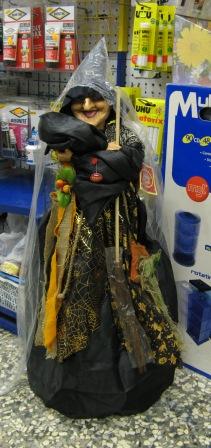
This stocking — once a genuine article of clothing, now usually acquired prepackaged — is called a calza caena (KAL-za ka-EYN-ah). “Calza” means stocking, and “caena” is Venetian for catena, a word usually used to mean a chain, but which is also used in knitting.
“La Befana vien de note,” goes the local version of her classic little doggerel, “co le scarpe tute rote/vestita a la romana/viva viva la Befana.” (The Befana comes at night, with her shoes all falling apart, dressed like a Roman woman, long live the Befana.) The shoes are in tatters because she’s obviously poor, and she’s dressed like a ciociara, a woman not literally from the Eternal City but from an area of the Roman hinterland called the Ciociaria, where the farmers’ wives wore crude leather sandals, big skirts and a scarf tied around their head. (No pointed hats, thanks anyway.) Why characterize a universal character as coming from the fields of Lazio? I’ll have to get back to you on that. She just is.
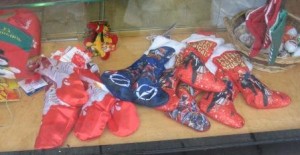
It bears repeating: All this bounty is a fairly recent phenomenon. Children of Lino’s vintage would get nuts in their stocking, and an orange was always stuffed down into the toe. He says some children really did get bits of coal. Homely simple items, mainly things that were good for you.
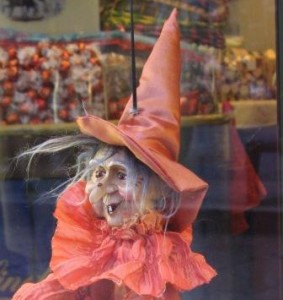
I don’t know — though I sort of doubt — that kids leave out the beans and wine anymore. Maybe the Befana is watching her cholesterol by now. But as for the coal, never fear: Some shops sell a confection that looks like coal but is basically sugar darkened with something innocuous. Mustn’t upset the kids.
So fill up that calza caena, brace yourself for the last little holiday rampage, then you can finally put away the decorations, throw out that desiccated tree, and intone the appropriate incantation: L’Epifania/tute le feste porta via (Epiphany carries away all the holidays.)

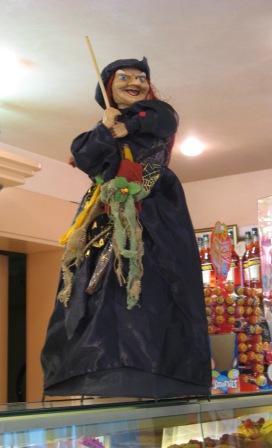
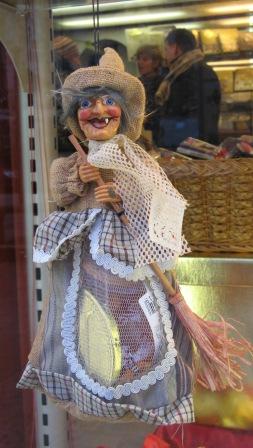
1 Comment
Thanks so much for reminding me about Grandmother Befana. I’d forgotten.
🙂